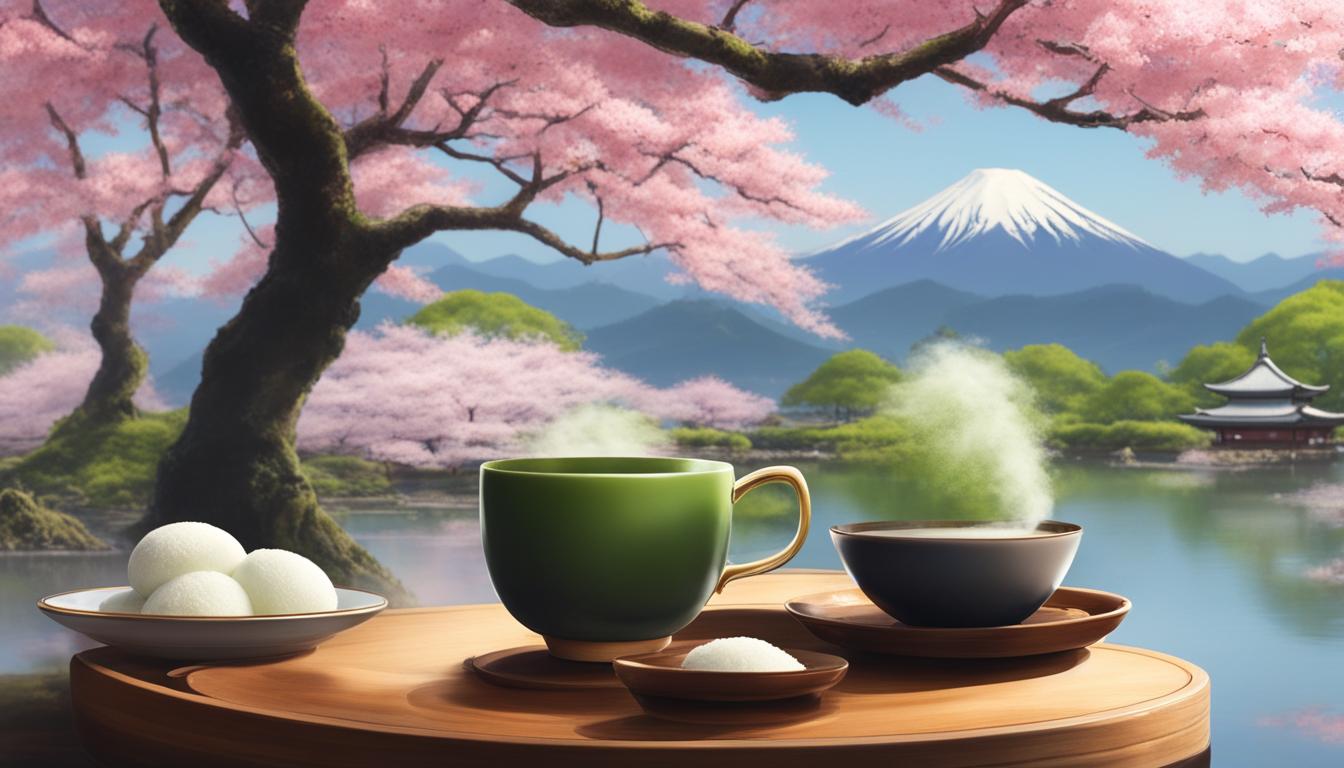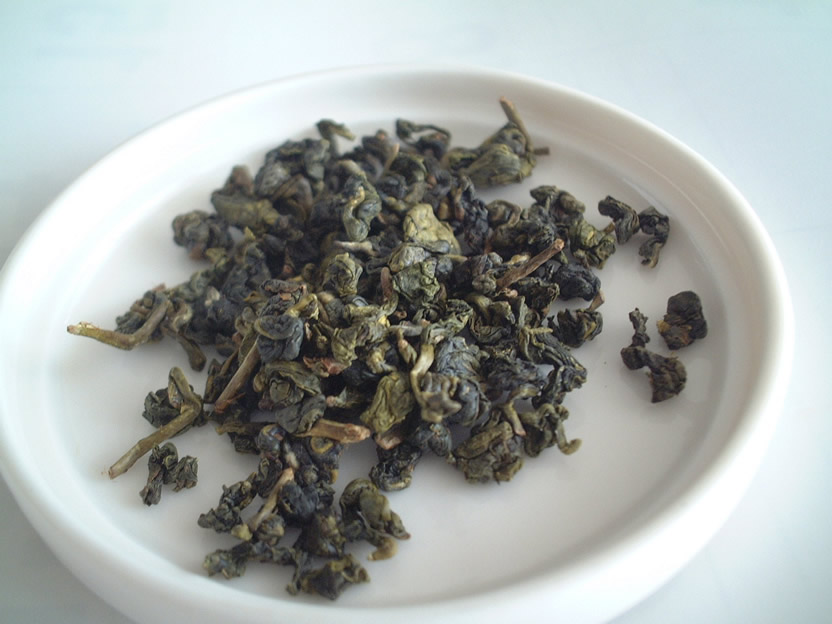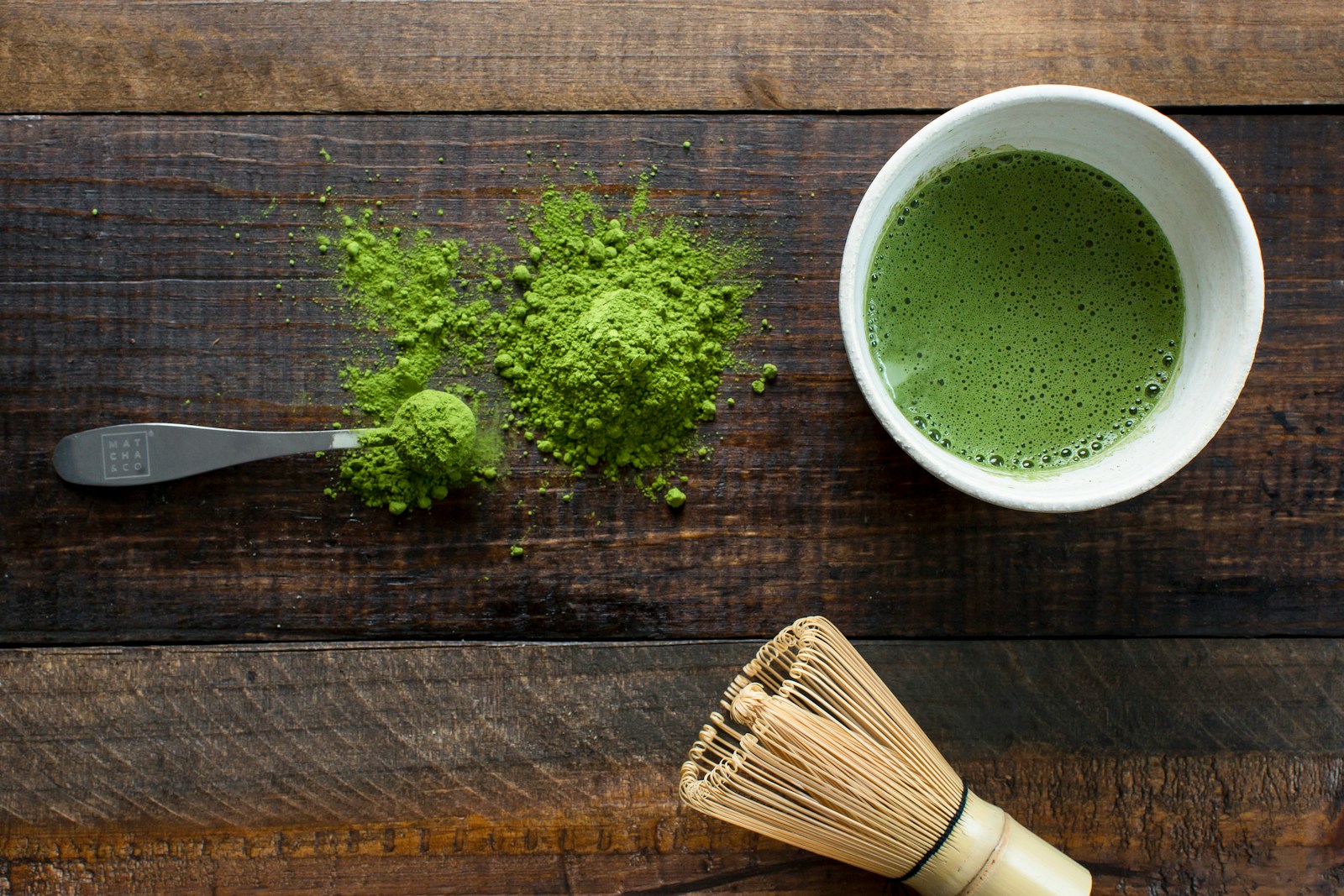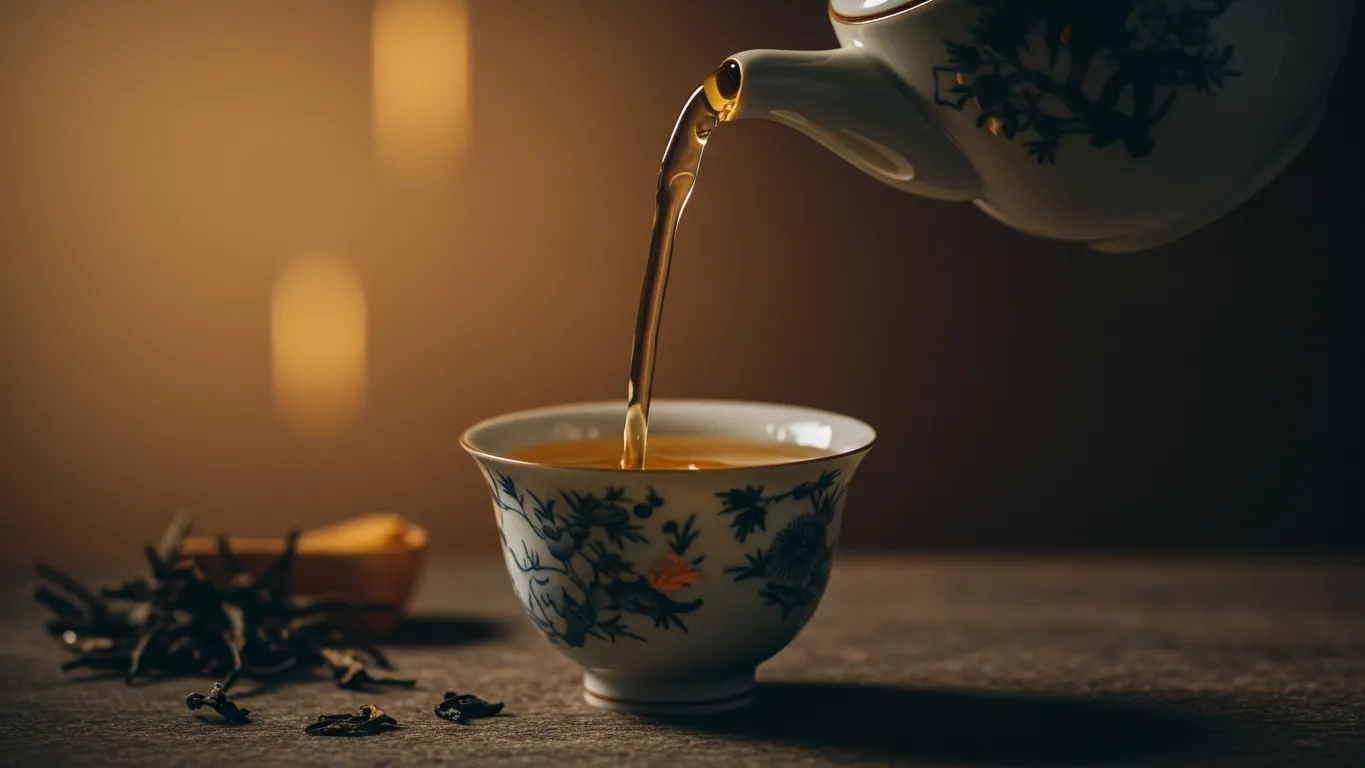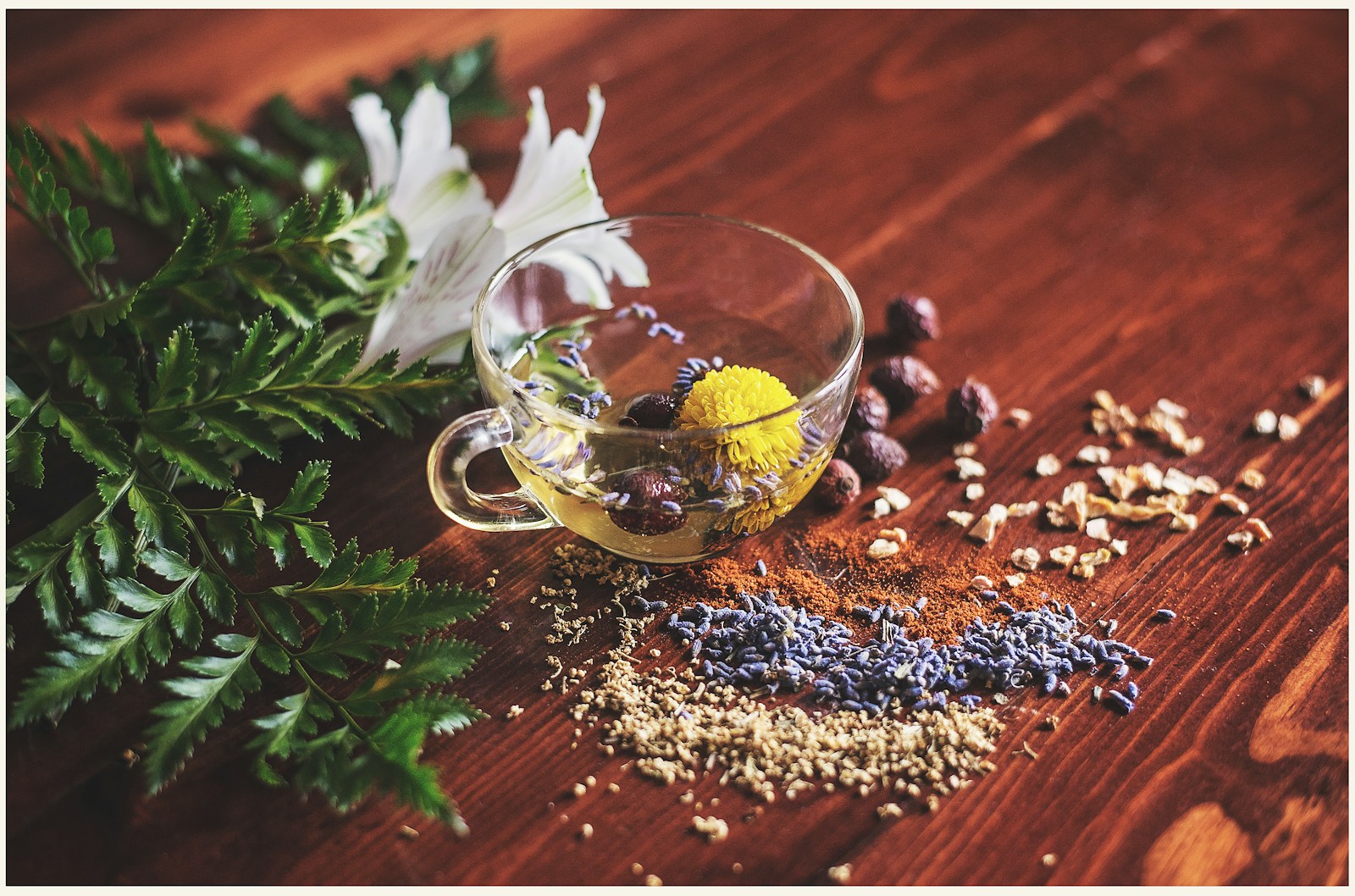Welcome, tea enthusiasts! Join us as we embark on a captivating journey to explore the diverse tea types from around the world. From China’s ancient tea culture to Japan’s Zen-like tea ceremonies, and India’s aromatic chai, we will sip our way across the globe and uncover the wonders of tea from different countries. Get ready for a delightful adventure through the tea varieties worldwide.
Key Takeaways:
- Tea selection from across the globe offers a rich variety of flavors and traditions.
- China’s ancient tea culture showcases a vast selection of tea varieties and the exquisite Gongfu tea ceremony.
- Japan’s tea ceremonies, known for their Zen-like qualities, feature green teas like matcha and sencha.
- India’s vibrant tea culture revolves around the popular masala chai and lively street-side tea stalls.
- Tea cultures extend to Russia, the Middle East, and Britain, each with their unique customs and rituals.
The Birthplace of Tea: China’s Ancient Tea Culture
China, the birthplace of tea, has a rich and ancient tea culture that dates back thousands of years. Chinese tea varieties are known for their diverse flavors and health benefits. From delicate green teas to robust black teas, fragrant oolongs to aged pu-erhs, each type offers a unique taste experience.
Gongfu tea, a traditional Chinese tea ceremony, is an elaborate and precise ritual that showcases the artistry of tea brewing. It involves carefully measuring and brewing tea leaves multiple times to extract their full flavor. The Gongfu tea ceremony not only creates a delicious cup of tea but also provides a meditative and immersive experience.
“In the words of ancient Chinese philosopher Lu Yu, ‘Tea is drunk to forget the din of the world.'”
In addition to the Gongfu tea ceremony, traditional Chinese teahouses are an integral part of Chinese tea culture. These teahouses provide a serene and relaxing environment where tea lovers gather to enjoy a cup of tea, engage in conversation, and appreciate the beauty of tea. Teahouses often have a wide selection of teas from different regions of China, allowing visitors to explore the diverse flavors and nuances of Chinese tea.
So, whether you are a tea connoisseur or simply appreciate the calming ritual of tea, China’s ancient tea culture offers a fascinating exploration into the world of tea. Join us on this global journey as we continue to uncover the wonders of tea from different countries, one cup at a time.
The Birthplace of Tea: China’s Ancient Tea Culture
| Tea Variety | Flavor Profile | Health Benefits |
|---|---|---|
| Green Tea | Delicate, vegetal | Rich in antioxidants, boosts metabolism |
| Black Tea | Full-bodied, malty | Improves heart health, aids digestion |
| Oolong Tea | Floral, fruity | Promotes weight loss, supports digestion |
| Pu-erh Tea | Earthy, mellow | Helps reduce cholesterol, aids in digestion |
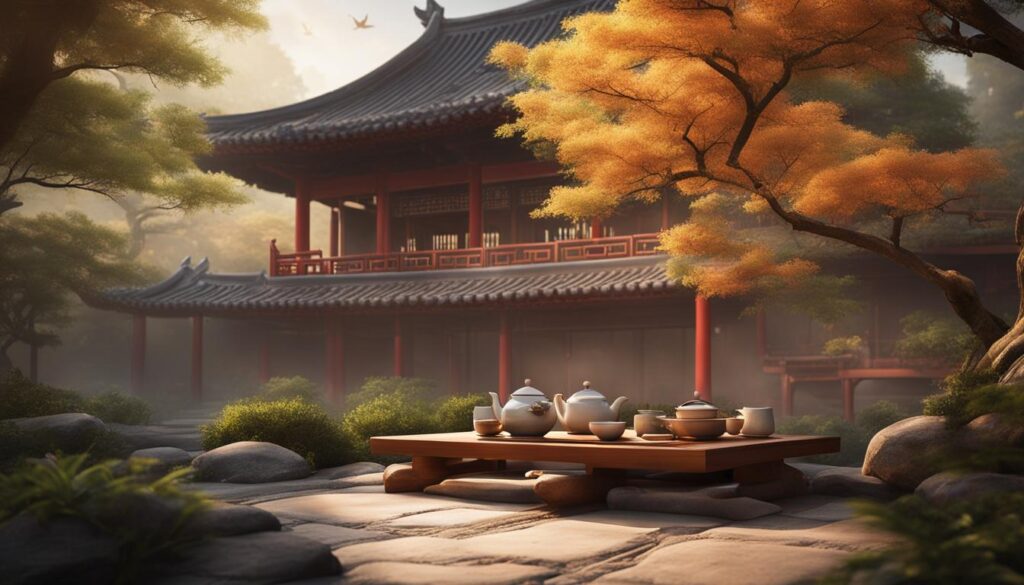
Discovering the Zen of Japan’s Tea Ceremony
Japan’s tea culture is a mesmerizing blend of tranquility, grace, and reverence. It is a world steeped in tradition and precise rituals that center around the Way of Tea, or “Chado.” At the heart of this captivating practice lies the profound appreciation for the art of tea preparation and the beauty of its presentation.
When exploring Japanese tea culture, one cannot overlook the wide array of tea types that hold a place of prominence. Green tea, in particular, takes center stage, with matcha and sencha being the most well-known varieties. Matcha, a vibrant powdered tea, is valued for its vibrant green color and the soothing feeling it imparts. Sencha, on the other hand, is a delicate, steamed green tea that captivates with its grassy aroma and refreshing taste.
The Way of Tea is meticulously followed during the Japanese tea ceremony, an enchanting experience that brings together harmony, respect, and mindfulness. The ceremony is a choreographed performance, where every movement and gesture are executed with grace and precision. From the hand movements used to whisk the matcha to the careful placement of each tea implement, every step has significant meaning and symbolism.
An Insight into Tea Implements
A key aspect of the Japanese tea ceremony is the presence of various tea implements that play essential roles in the preparation and serving of tea. These implements, which are both practical and aesthetically pleasing, add an element of beauty and elegance to the ceremony. Here are some notable tea implements:
| Tea Implement | Description |
|---|---|
| Chawan | A handmade ceramic bowl used for preparing and drinking tea. Each chawan is unique and adds character to the tea ceremony. |
| Chashaku | A bamboo tea scoop used to measure and transfer matcha powder. Its delicate curvature adds a touch of artistry to the proceedings. |
| Chasen | A bamboo whisk with finely divided bristles used to whisk the matcha into a frothy consistency. The chasen’s delicate craftsmanship aids in achieving the desired texture. |
| Natsume | A small, lacquered container used to store matcha powder. Its compact size and elegant design make it a visually appealing addition to the tea ceremony. |
Through the Japanese tea ceremony and the appreciation of tea implements, one can gain a deeper understanding of the cultural significance and artistry behind this revered practice. The poetic simplicity, attention to detail, and focus on mindfulness make the tea ceremony an oasis of serenity in a busy world.
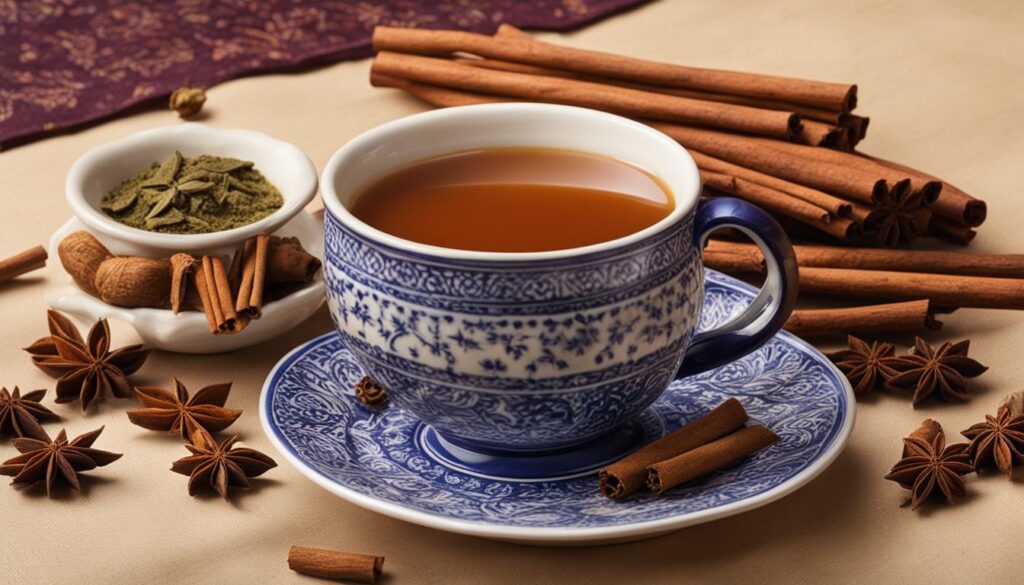
The Art of Masala Chai
Brewing a perfect cup of masala chai is an art in itself. The tea leaves are simmered in water with a blend of spices such as ginger, cardamom, cloves, and cinnamon, allowing the flavors to infuse. The addition of milk creates a creamy and indulgent texture that perfectly complements the robustness of the tea. Sweetened with sugar or jaggery, masala chai provides a harmonious blend of fragrant spice, warmth, and sweetness.
So, the next time you find yourself in India or at a local Indian restaurant, be sure to indulge in a cup of masala chai. It’s a sensory experience that will transport you to the aromatic world of Indian tea culture, where the simple act of sipping tea brings people together and warms the soul.
Tea Cultures Beyond: Russia, the Middle East, and Britain
As we continue our global journey exploring tea cultures, we venture beyond China, Japan, and India to discover the unique customs and traditions of Russia, the Middle East, and Britain. Each of these regions has its own distinct tea culture, showcasing the diverse ways in which tea is enjoyed and celebrated around the world.
Russian Tea Culture
In Russia, tea holds a special place in the hearts of the people. The Russian tea tradition centers around the use of a samovar, a traditional tea brewing device. The samovar consists of a metal container filled with hot water, which is used to brew a concentrated pot of tea. This strong tea is then served in small cups and often enjoyed with a slice of lemon or a spoonful of jam. The Russian tea culture is known for its warmth and hospitality, with tea being a symbol of friendship and good company.
Middle Eastern Tea Culture
Tea is deeply ingrained in Middle Eastern culture, where it is revered as a symbol of hospitality and friendship. Mint tea, or “nana” as it is known in Arabic, is one of the most popular tea varieties in the Middle East. This refreshing and aromatic tea is made by steeping fresh mint leaves in boiling water and sweetening it with sugar. It is often served in small glasses, accompanied by dates or other traditional sweets. Sharing tea is an integral part of Middle Eastern social gatherings, fostering connections and creating moments of togetherness.
British Tea Culture
No exploration of tea cultures would be complete without a mention of the quintessential British tea tradition. Afternoon tea, with its delicate teacups, scones, and finger sandwiches, is an institution in Britain. Dating back to the 19th century, afternoon tea was initially introduced by Anna, the Duchess of Bedford, as a way to curb hunger between lunch and dinner. Today, it has evolved into a cherished social ritual, often accompanied by gossip and laughter. Whether enjoyed in a cozy tearoom or in the comfort of one’s home, the British tea culture is steeped in elegance and tradition.
As we conclude our exploration of tea cultures beyond the borders of China, Japan, and India, we are reminded of the universal appeal and power of tea to bring people together. Across continents and cultures, tea serves as a unifying beverage, bridging gaps and fostering connections. So, whether you find yourself sipping strong brews in Russia, sharing mint tea in the Middle East, or indulging in afternoon tea in Britain, let us raise our cups and celebrate the rich tapestry of tea cultures that exist around the world.
| Country | Tea Tradition |
|---|---|
| Russia | Strong tea brewed in a samovar, served in small cups with lemon or jam |
| Middle East | Mint tea (nana), served in small glasses, accompanied by dates or traditional sweets |
| Britain | Afternoon tea, with delicate teacups, scones, and finger sandwiches |
Uniting Cultures Through a Cup of Tea
Tea, with its diverse flavors and cultural significance, embodies the power to bring people together and bridge the gaps between different cultures. Our exploration of tea types from around the world has revealed a shared love and appreciation for this ancient beverage. Whether sipping a delicate Japanese matcha or a robust Indian masala chai, we find common ground in the warmth and magic that tea brings.
Tea holds a special place in the hearts of people worldwide, acting as a unifying beverage that transcends borders. As we partake in the timeless rituals of tea, we honor the traditions and customs that have been passed down through generations. It is through these moments that we connect with our own roots and develop a deeper understanding and respect for the diverse cultures that make up our global community.
The cultural significance of tea stretches beyond mere consumption. Tea ceremonies, such as the Japanese Way of Tea and the Chinese Gongfu tea ceremony, embrace mindfulness, harmony, and reverence for nature. These ancient rituals remind us to slow down, appreciate the present moment, and foster connections with others. Through tea, we discover the power of mindful living and the art of hospitality.
Tea’s ability to create bonds extends beyond the individual and reaches into the realm of international relationships. The trading and sharing of tea from one country to another have fostered connections and exchanges between cultures throughout history. Today, tea continues to serve as a symbol of diplomacy and peace, reminding us that no matter our differences, we can always find common ground over a cup of tea.
FAQ
What are the different types of tea we will explore from around the world?
We will delve into the flavors and traditions of green, black, oolong, and pu-erh teas from China, as well as matcha and sencha teas from Japan, and the famous masala chai from India.
What is the Gongfu tea ceremony?
The Gongfu tea ceremony is an elaborate ritual in Chinese tea culture that showcases the artistry and precision of tea brewing.
What is the Way of Tea in Japan?
The Way of Tea, or “Chado,” is the Japanese tea ceremony that emphasizes harmony and balance in the preparation and presentation of tea.
What is masala chai?
Masala chai is a spiced blend of black tea, ginger, cardamom, cloves, and cinnamon that is popular in Indian tea culture.
What are some unique tea traditions in other countries?
Russia has a tradition of brewing strong tea in a samovar, the Middle East is known for its sweet mint tea, and Britain is famous for its refined afternoon tea.
How does tea unite different cultures?
Tea has a shared love and appreciation across cultures, acting as a unifying beverage that brings people together and fosters global connections.

